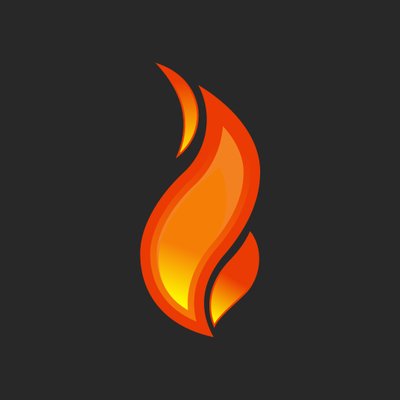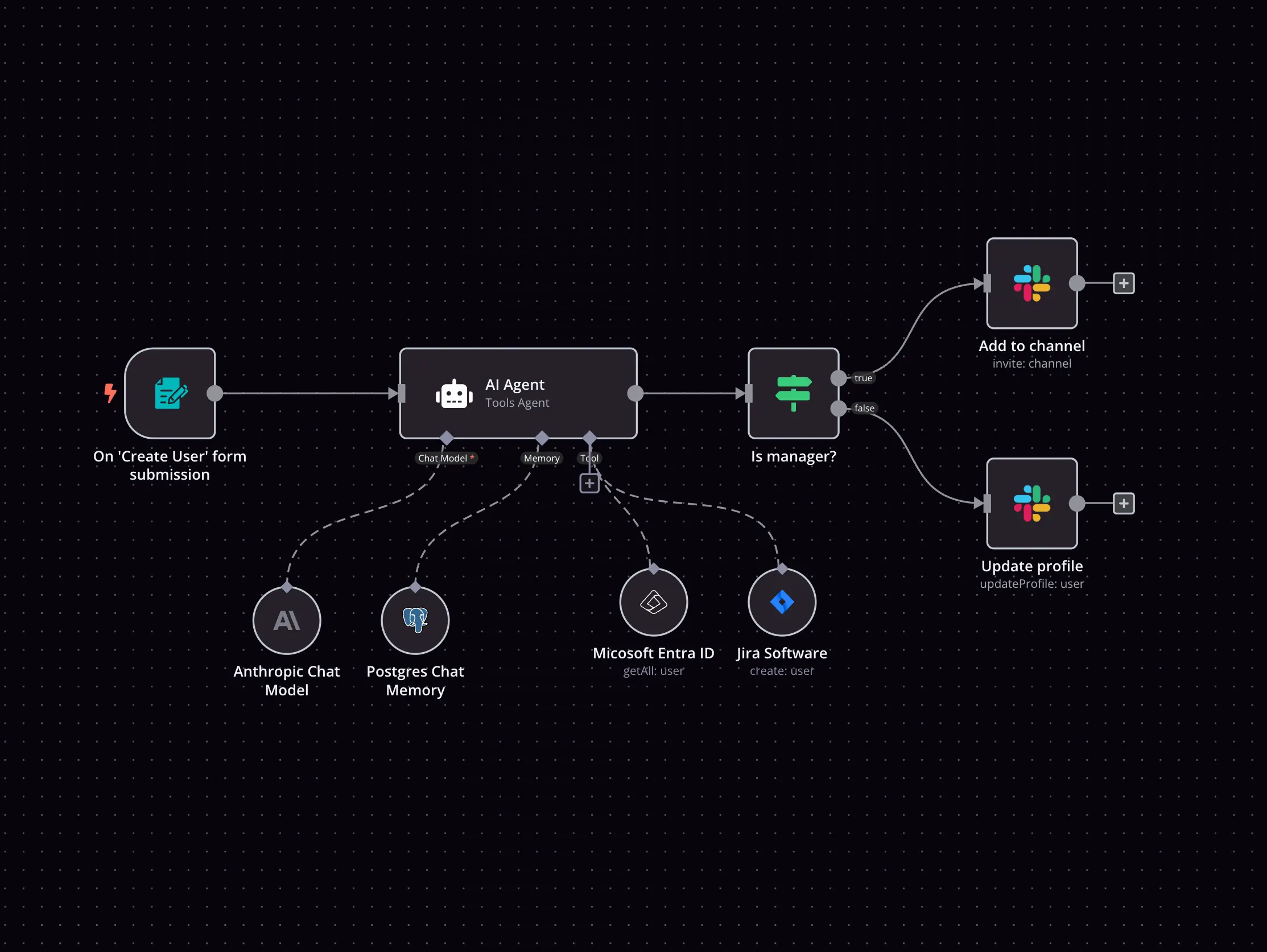BrowserStack and Forms On Fire integration
Save yourself the work of writing custom integrations for BrowserStack and Forms On Fire and use n8n instead. Build adaptable and scalable Development, workflows that work with your technology stack. All within a building experience you will love.


How to connect BrowserStack and Forms On Fire
Create a new workflow and add the first step
In n8n, click the "Add workflow" button in the Workflows tab to create a new workflow. Add the starting point – a trigger on when your workflow should run: an app event, a schedule, a webhook call, another workflow, an AI chat, or a manual trigger. Sometimes, the HTTP Request node might already serve as your starting point.
Build your own BrowserStack and Forms On Fire integration
Create custom BrowserStack and Forms On Fire workflows by choosing triggers and actions. Nodes come with global operations and settings, as well as app-specific parameters that can be configured. You can also use the HTTP Request node to query data from any app or service with a REST API.
Supported API Endpoints for BrowserStack
Get plan details
Retrieve details about your Automate plan.
Get plan details
Obtain information about your Automate plan including the number of parallel sessions allowed and currently running.
Get browser list
Obtain a list of available OS, browsers, and real mobile devices.
Get browser list
Retrieve the list of available browsers for automation.
Get project list
Fetch a list of projects associated with your account.
Get project details
Retrieve the details of a specific project.
Get status badge
Obtain the status badge for a project.
Update project details
Modify the details of an existing project.
Delete project
Remove a specific project from your account.
Get project list
Fetch a list of projects associated with the user.
Get project details
Retrieve detailed information about a specific project.
Get status badge
Obtain the status badge for a specific project.
Get build list
Fetch a list of builds related to your projects.
Update build details
Change the details of an existing build.
Delete build
Remove a specific build from your account.
Get build list
Retrieve a list of builds under a project.
Get session list
Retrieve a list of all sessions associated with your account.
Get session details
Obtain detailed information about a specific session.
Delete session
Remove a specific session from your account.
Get session list
Fetch a list of sessions associated with the user's account.
Get session details
Get detailed information about a specific session.
Upload media file
Upload a media file to your account.
List uploaded media files
Retrieve a list of files uploaded to the account.
Upload media file
Upload a media file for use in tests.
Delete media file
Remove a specific media file from the user's account.
List builds
Fetch the 10 recent test builds that have run on BrowserStack using your username and access key.
Update build
Update a specific build name.
Delete multiple builds
Delete multiple builds at the same time.
List builds
Retrieve a list of builds with optional filtering by parameters.
List builds with offset
Retrieve builds starting from a specific offset.
List builds by status
Retrieve builds filtered by their status.
List builds by project ID
Retrieve builds associated with a specific project ID.
Update build
Update the name of a completed build using its ID.
Delete multiple builds
Delete up to five builds at once using their IDs.
Upload terminal logs
Upload terminal logs for a specified build using its ID.
Get browser list
Retrieve the complete list of OS, browser, and mobile device combinations that BrowserStack supports.
To set up BrowserStack integration, add the HTTP Request node to your workflow canvas and authenticate it using a generic authentication method. The HTTP Request node makes custom API calls to BrowserStack to query the data you need using the API endpoint URLs you provide.
See the example hereThese API endpoints were generated using n8n
n8n AI workflow transforms web scraping into an intelligent, AI-powered knowledge extraction system that uses vector embeddings to semantically analyze, chunk, store, and retrieve the most relevant API documentation from web pages. Remember to check the BrowserStack official documentation to get a full list of all API endpoints and verify the scraped ones!
Supported API Endpoints for Forms On Fire
Get form
Returns the Published version of matching Forms or all versions of a single specified Form.
Get form screen
Returns the Form Screen matching the given parameters.
Get screen map search
Retrieves screen information for map search.
Search data sources
Finds all Data Sources matching the given parameters.
Get data source
Returns the Data Source matching the given parameters.
Search folders
Finds all Folders matching the given parameters.
Send push notification
Send a push notification to a specified user.
Send Push notification
This API allows you to send a push notification to a specified user.
Search form entries
Finds all Form Entries or all versions of a single specified Form.
Download form entry file
Download a media file captured on a given form Entry.
Get form entry
Returns the Form Entry matching the given parameters.
Search tasks
Finds all Tasks matching the given parameters.
Get task
Returns the Task matching the given parameters.
Search task
Searches for tasks.
Create task
Creates a new task.
Update task
Updates the details of a task.
Delete task
Deletes a task.
Get companies
Retrieve a list of companies based on search criteria.
List companies
Retrieve a list of companies.
Create company
Add a new company to the database.
Get company
Retrieve details of a specific company by its ID.
Create company
Create a new company in the system.
Update company
Updates the details of a company.
Get company
Retrieve details for a specific company.
Get data source
Retrieves information about a data source.
Update data source
Updates the details of a data source.
Get users
Retrieves a list of users.
Create user
Creates a new user.
Update user
Updates the details of a user.
Delete user
Deletes a user.
Delete usergroup
Deletes a user group.
Update usergroup
Updates the details of a user group.
Create usergroup
Creates a new user group.
Search usergroup
Searches for user groups.
Create repository API
Creates a new repository API.
To set up Forms On Fire integration, add the HTTP Request node to your workflow canvas and authenticate it using a generic authentication method. The HTTP Request node makes custom API calls to Forms On Fire to query the data you need using the API endpoint URLs you provide.
See the example hereThese API endpoints were generated using n8n
n8n AI workflow transforms web scraping into an intelligent, AI-powered knowledge extraction system that uses vector embeddings to semantically analyze, chunk, store, and retrieve the most relevant API documentation from web pages. Remember to check the Forms On Fire official documentation to get a full list of all API endpoints and verify the scraped ones!
BrowserStack and Forms On Fire integration details
FAQ
Can BrowserStack connect with Forms On Fire?
Can I use BrowserStack’s API with n8n?
Can I use Forms On Fire’s API with n8n?
Is n8n secure for integrating BrowserStack and Forms On Fire?
How to get started with BrowserStack and Forms On Fire integration in n8n.io?
Looking to integrate BrowserStack and Forms On Fire in your company?
The world's most popular workflow automation platform for technical teams including
Why use n8n to integrate BrowserStack with Forms On Fire
Build complex workflows, really fast


